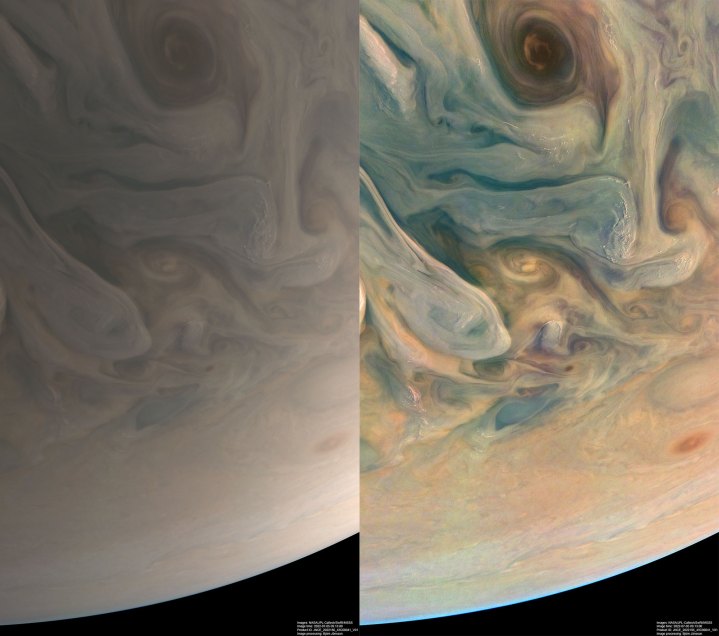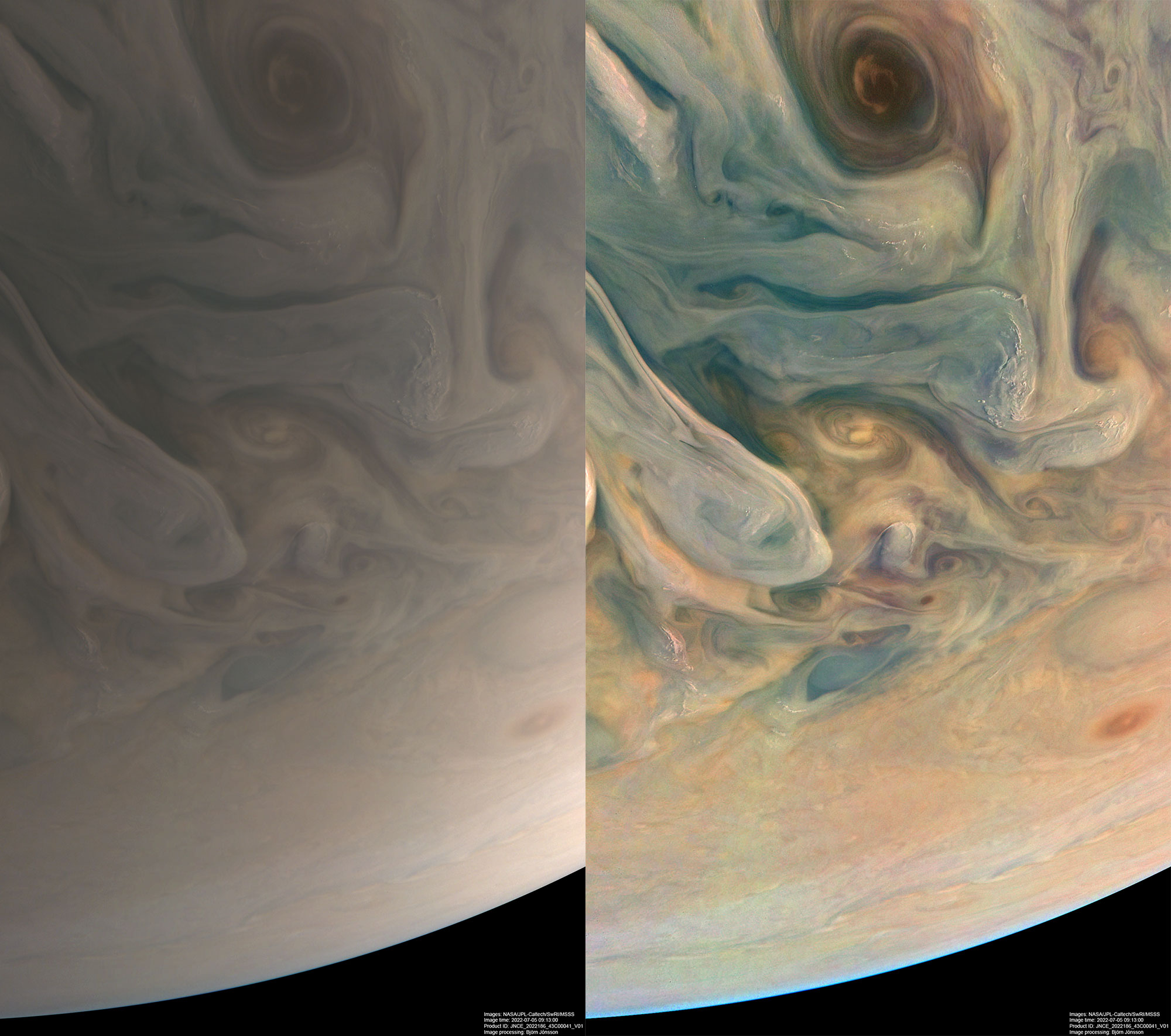[ad_1]
We’re used to pondering of Jupiter as an orangey-brown form of shade, with its distinctive coloured options just like the Nice Crimson Spot. However a latest picture of Jupiter shared by NASA reveals the planet in fairly a unique shade palette, displaying the planet’s clouds in two completely different codecs. Firstly, there’s the planet because the human eye would see it, in Earthy, browny beige shades tinged with inexperienced. And secondly, there’s a saturated model that reveals off the small print of the cloud formations in vivid teals and greens.
The pictures had been created from information taken by NASA’s Juno spacecraft, they usually had been processed by citizen scientist Björn Jónsson, an beginner picture processor who shares his work with the general public.

Turning observations from spacecraft or telescopes into a picture is a detailed course of requiring many explicit choices about shade, distinction, and steadiness, which have an effect on how the ultimate picture seems and which options it emphasizes. It’s potential to course of a picture to make it as near what we’d observe personally if we had been to journey to the thing, just like the picture of Jupiter on the left. However it’s additionally helpful to make changes like turning up the saturation and distinction to assist see options like cloud shapes in sharper element, as you possibly can see within the picture of Jupiter on the fitting.
Within the extra saturated picture, you possibly can see options of Jupiter’s ambiance like its deep swirling vortices, and the completely different colours can assist to select completely different chemical compounds making up the ambiance.
The explanation Jónsson was in a position to course of these photos is that each one Juno information is made publicly obtainable in its uncooked kind on the mission’s web site, and members of the general public are inspired to strive their fingers at processing the info for themselves. Whilst you’re there, you may as well see extra of Jónsson’s gorgeous photos, plus many different photos processed by different citizen scientists.
Editors’ Suggestions
[ad_2]

